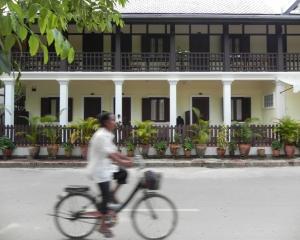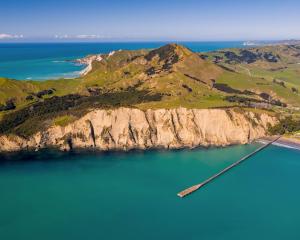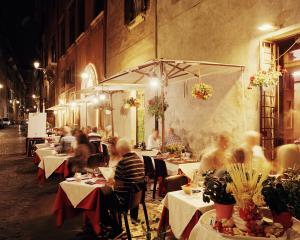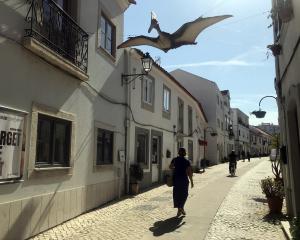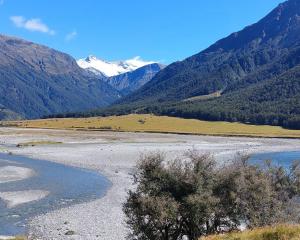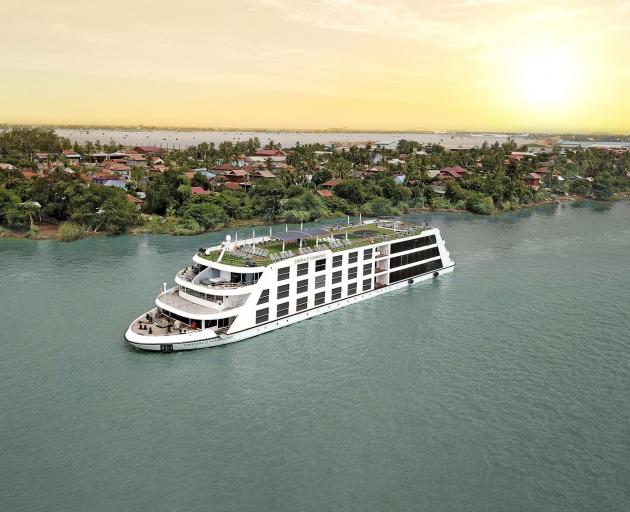
It may be Vietnam’s rice bowl, but the Mekong Delta is so much more. Producing more than half of Vietnam’s rice and more than two-thirds of the nation’s succulent fruit, the delta is more like a giant punchbowl of food, flavour and fertility. I joined Emerald Cruises for a week-long float on the majestic Mekong, from Ho Chi Minh City to Phnom Penh, on board its sleek new star-ship, Emerald Harmony. What a marvellously languid way to revel in the revelations of this watery wonder.
As we drifted along the delta, a constant sight was the presence of people living on, by or near the water. Fish farms are a signature of the river, where a cluster of houseboats, buoyed by plastic barrels, harbour vast underwater pens of young fish, taking advantage of the nutrients and currents of the river. The houseboats we visited boasted over 100,000 voracious catfish. They’re farmed for eight to 10 months before being sold on the market. Needless to say, they are rather smelly operations.
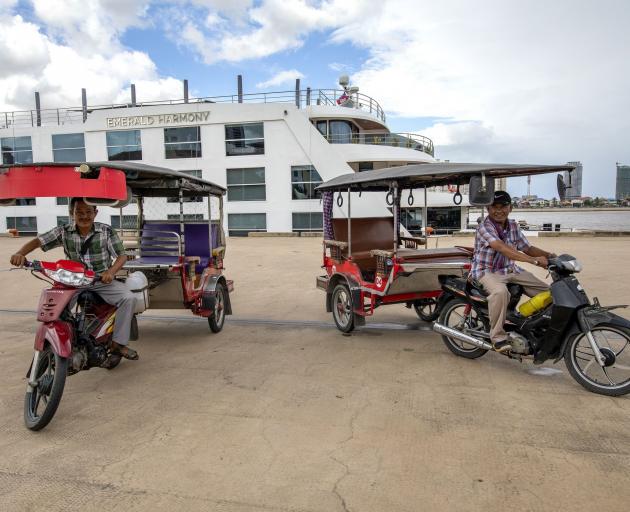
After threading our way through the Cho Gao canal, which was originally dug by the French in 1876 to connect Saigon with the Mekong Delta, Ben Tre made for a memorable stop, nicknamed the coconut kingdom of Vietnam given its vast swathe of plantations. After disembarking the boat, we jaunted to the village of Dat Dua, home to one of the Ben Tre’s famed coconut candy workshops. Vietnamese coconut candy has been a signature sweet for a century, combining the sweetness of sugar with the fragrance and natural fatty taste of coconut.
Initially known as Mo Cay candy, it was first produced as a home-made treat served to guests during festive seasons. Visiting one of the rustic workshops, it’s a powerhouse village enterprise, with malt syrup, sugar and coconut comprising the main ingredients, with a range of flavours added to the mix, from durian to mango. It was fascinating to see the production process first hand, where the sticky mixture is rolled and cut into squares, before several dozen villagers hand-wrap the finished product.
We also were invited to try some locally produced rice wine. For centuries, rice wine has become an integral part of local daily lives. Farm workers will still typically drink some rice wine before heading into the fields to induce energy. I declined the opportunity to sample some Vietnamese snake wine, in which two snakes had been added to the jar to infuse the wine along with herbs, a la traditional Chinese medicine-style. Supposedly it blitzes back pain.
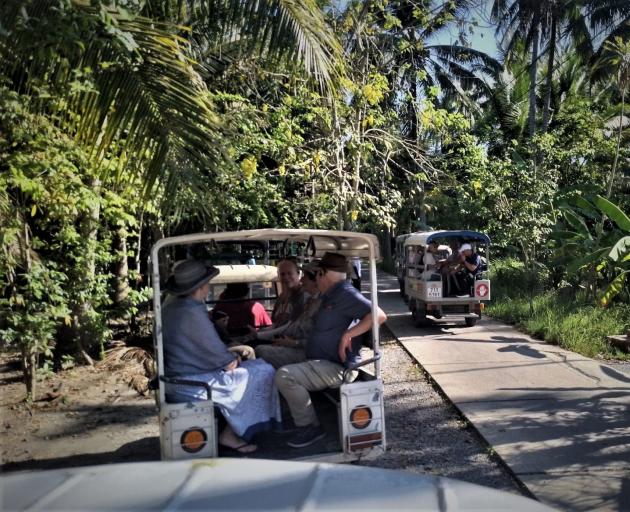
Have you ever been on a Lambro ride? It was a novel experience for me. After feasting on the coconut candy, we boarded a fleet of Italian Lambros, which are three-wheeled, Vespa-like farm vehicles, produced by Lambretta and principally used to transport produce, rather than indulgent river cruise passengers. They sure make for a fun ride in the canopied cargo deck.
Zipping through the skinny lanes of Dat Dua, snatching a rich array of vignettes of the fruit orchards and humble village life and exchanging waves with friendly locals, we took in the architectural grace of Tan Long Pagoda and its gilded reclining Buddha. We also enjoyed some local folk music. Mekong Delta farmers are famed for their love of music. Don Ca Tai Tu, a Vietnamese style of folk opera, originates from here, comprising a mix of ballads and theatre accompanied by musicians playing a zither or guitars. Spanning the light-hearted and the melancholic, regardless of language barriers, it’s easy to enjoy Don Ca Tai Tu, thanks to expressive acting and melodious singing.
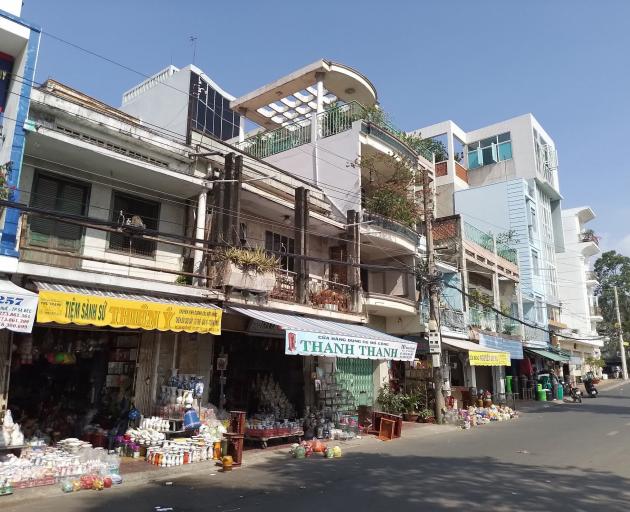
Another sensational excursion lay in wait at Sa Dec. This charming riverside town, richly infused with French colonial architecture, was the original setting of the autobiographical novel The Lover by Marguerite Duras, which was turned into a movie in 1991 — one of the first Western films shot in Vietnam after the war. It’s a dreamy account of living in Sa Dec in the 1930s. It’s also rather scandalous, given she was 15 and her Chinese lover was 27. The ancestral family home of her lover, which is central to the story, has been lovingly restored and was a delight to stroll through — a blend of Vietnamese, Chinese and French influences. Numerous old mansions and merchant homes line the riverfront on the march to the multi-sensory frenzy of Sa Dec Market.
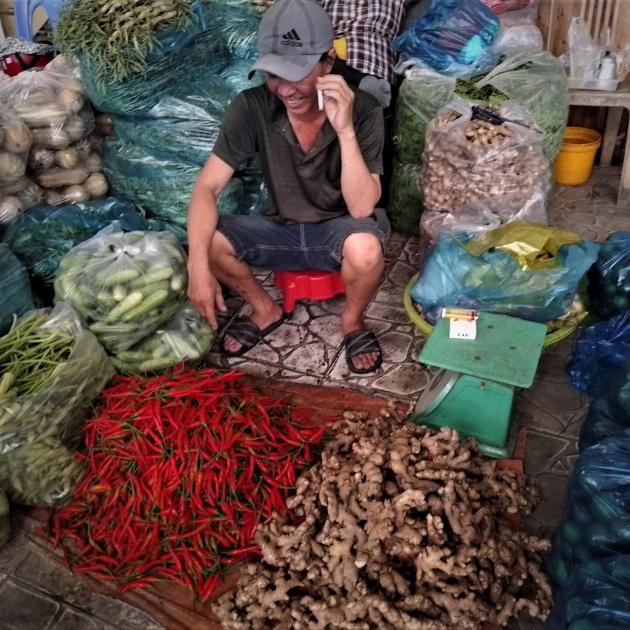
The explosion of colour, the astonishing array of fresh produce and intense trading hustle all made for a compelling encounter. It was a self-instructive reminder that the Mekong Delta is a hothouse of fresh produce, from the blazing red chillis and sugarcane juice to the rainbow of fruits, spanning mangosteens, durian, jackfruit and dragon fruit. You’ll want to gird your loins before surrendering to the wet market, where hordes of fluffy ducklings encased in wire baskets competed for attention alongside the tied-up frogs, giant water beetles, snakes and various flapping fish. I was assured the ducklings weren’t being sold to be eaten!
Another Sa Dec highlight is Kien An Chung pagoda, which has a colourful history, serving as a prison before reverting to its original purpose, after being built a century ago by Chinese migrants from Fujian. Far from being a tourist trap, like so many excursions with Emerald Cruises, you get to savour a raw, authentic and untainted-by-tourism slice of riverside life in the Mekong Delta.
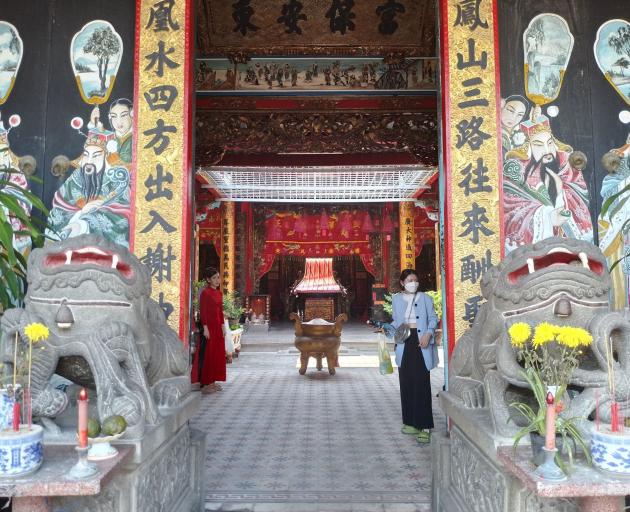
Further up the river, a whistle-stop visit to Long Khanh Island showcased more village industriousness, where a village army of cotton weavers is cultivating a solid livelihood on the loom. Over 1000 shawls and scarves are produced daily by the village’s 50 workshops. But this cotton-weaving village has been diversifying its products in recent years. Traditionally, the black-and-white checkered shawls were donned by women in the Mekong Delta, as a cushion against heavy loads or to mop sweat. You’ll still see them commonly worn in the fields.
Weavers are preserving their tradition by adding more hues to the colour scheme for checkered shawls and creating additional products such as hats, ties and bags, patterned in squares or stripes. Also in Long Khan, we admired the homely beauty of Hoa Hao Buddhist pagoda, where we also met an 80-year-old war veteran who fought for the Vietcong, who proudly posed in his uniform for photos.
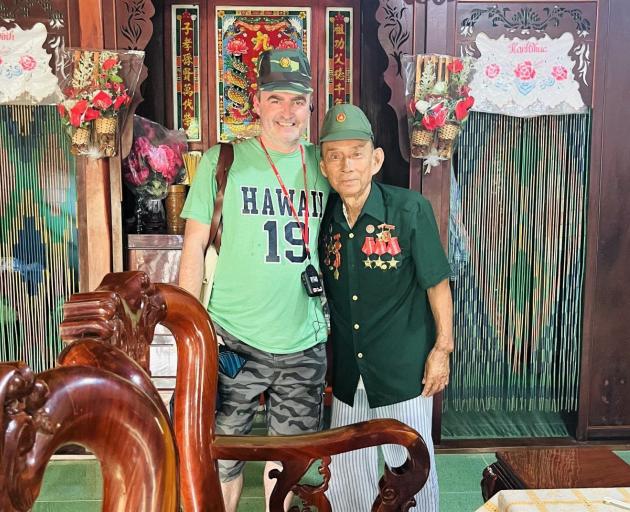
Tan Chau beckoned as our final Vietnam stop in the Mekong. After transferring ashore by sampan, which are towed along by Emerald Harmony, we saddled up for a traditional rickshaw ride through the bustling town, to the Cao Dai Temple, a riot of fantastical colour. Founded in Vietnam a century ago, Cao Dai religion draws from a number of world faiths, beliefs and symbolism, particularly Buddhism, Confucianism and Catholicism. It also integrates secular ideas like the big bang, all with the aim of being a unifying force.
The temple’s vibrant colour palette and multi-denominational sculptures and icons are truly eye-opening. For a complete change of scenery, we also jaunted to the idyllic and oh-so-fertile Evergreen Island, a hidden-away haven of farming prowess. Passing by traditional rural homes flanking the pencil-thin lanes, we also chatted to farming families about their basic but comfortable way of life.
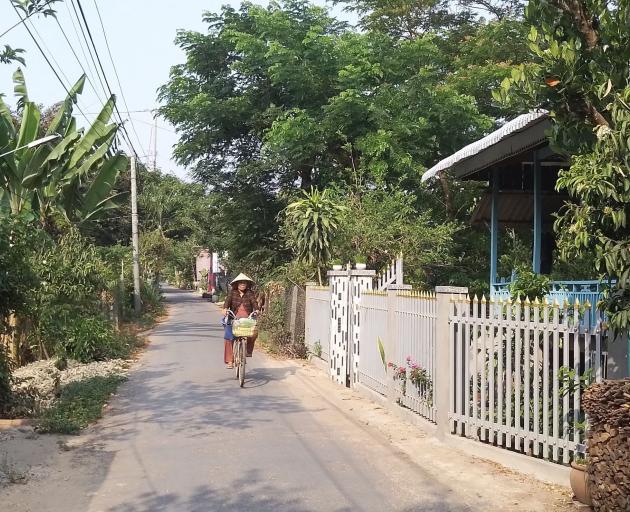
The bounty of produce harvested from their fields and orchards could cover virtually every base in your supermarket’s fruit and veg section. The Mekong Delta is so much more than a rice bowl. It’s a bountiful food bowl. I marvelled over the freshly harvested corn, the ginger and garlic, the freshly picked bananas, sacks of freshly dug potatoes, so many leafy greens and a rainbow of tropical fruit. Building up quite the appetite, it was time to head back to the ship for a flavourful lunch, powered by local produce.
Afloat in this sultry, sinuous aqua ribbon, the rolling scenic medley of this river cruise could illuminate a library-load of National Geographic magazines. I loved watching the slumping sun give the Mekong Delta a good-night kiss from the sun deck, as children paddled home with freshly caught fish to their rustic family silt house. And it was the kids that will melt your heart, who were so eager to greet us, as we passed by. They seemed even more inquisitive of us than we were of them.
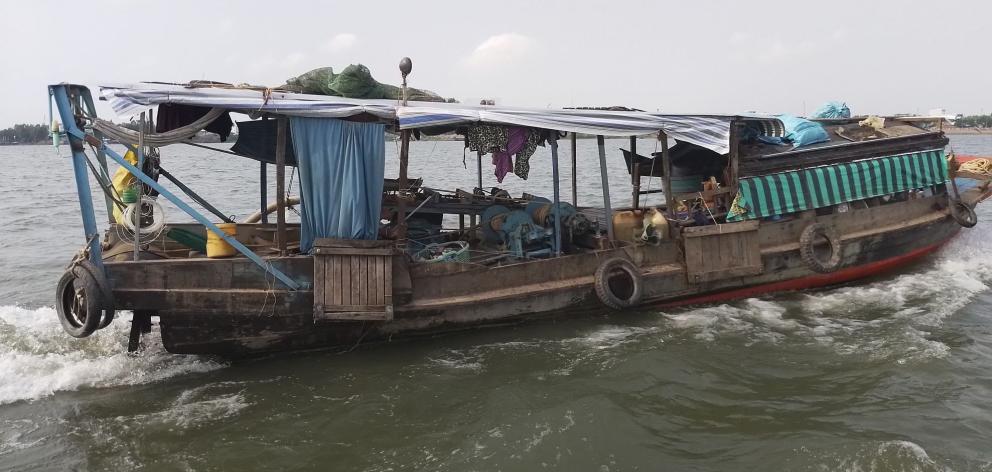
I would wake up early and head outside in the balmy dawn calm, serenaded by frisky bird calls and the soft chug-chug-chug of motorboats, as towering pagodas pierced the skyline amid the jungle greens. I was constantly left agog at the sheer variety of freight passing by on lumbering river barges, and routinely amused by the skipper’s laundry hanging out to dry on the back deck. The frequent sight of floating gas stations edging the riverbank seemingly posed as sentinels reinforced the importance of this vast liquid highway and its lifeblood stature for tens of millions of residents.

